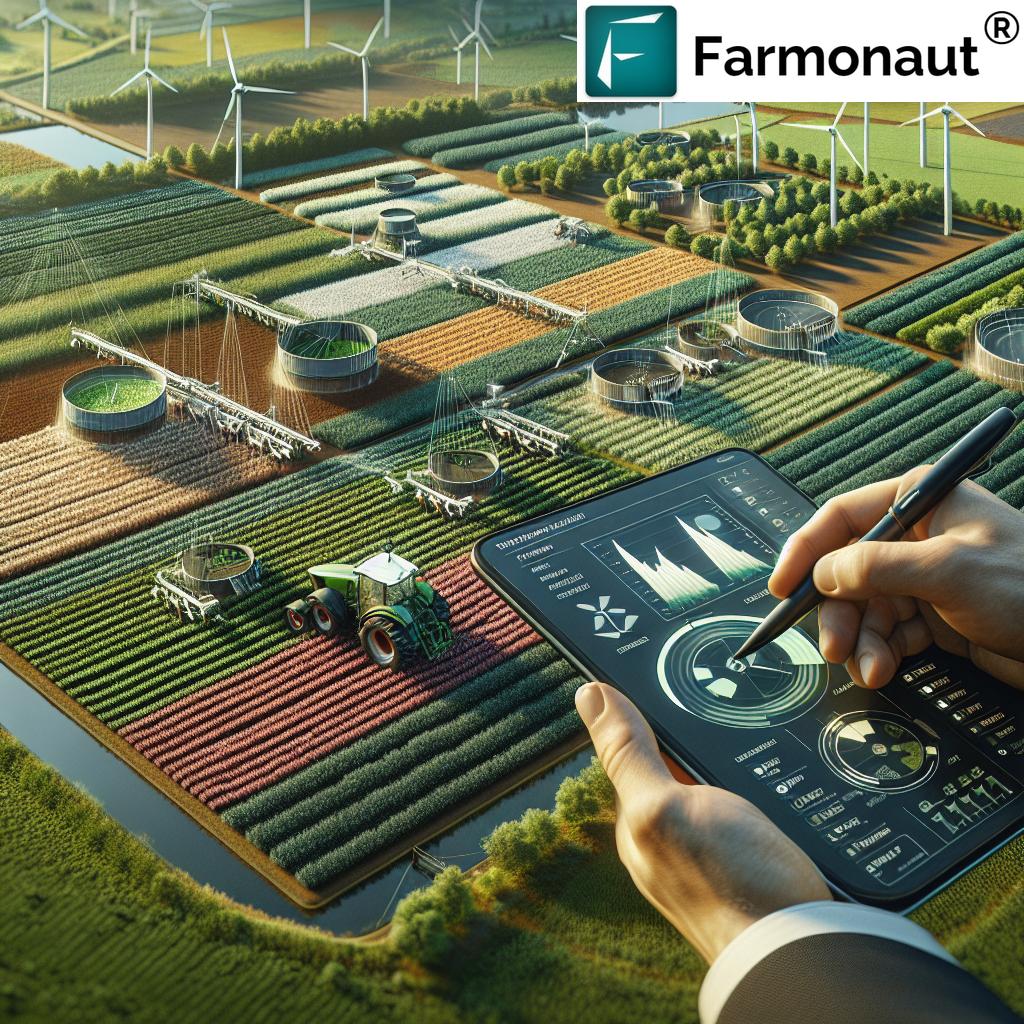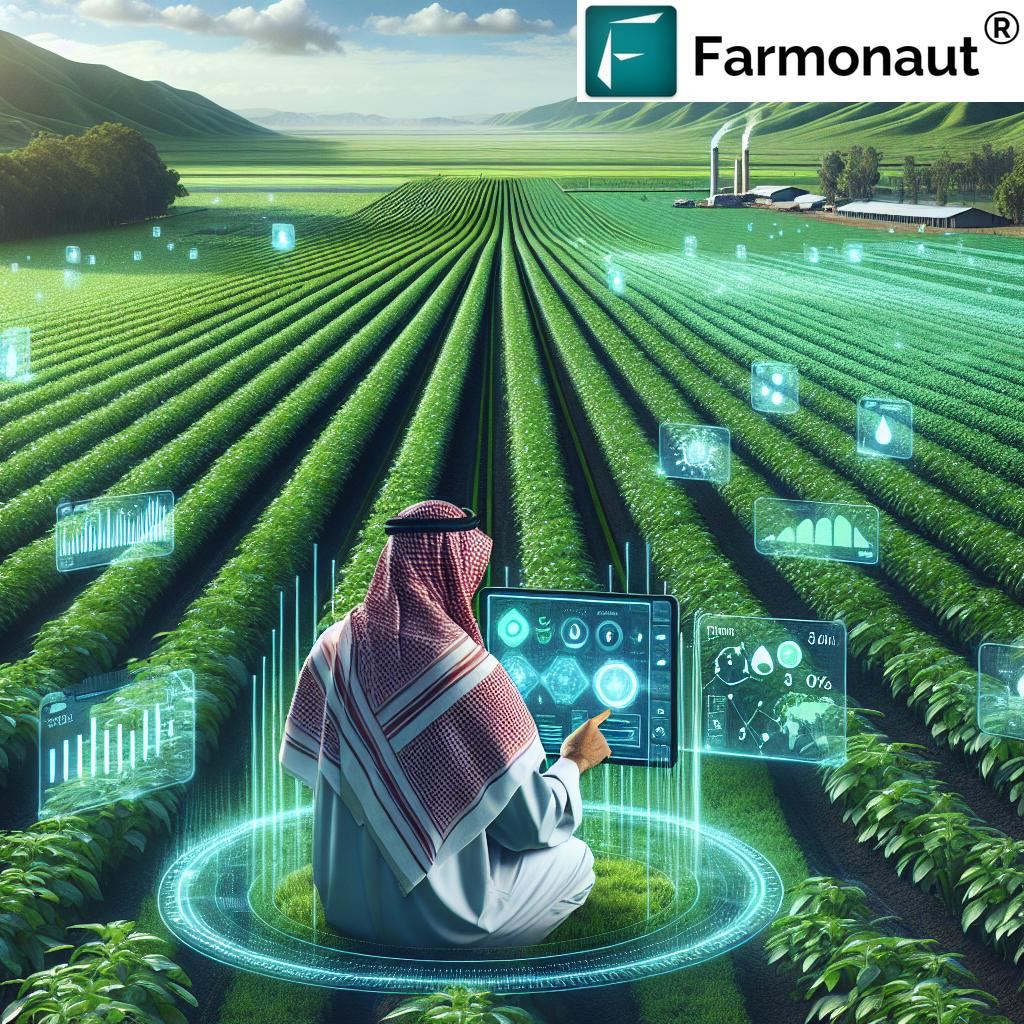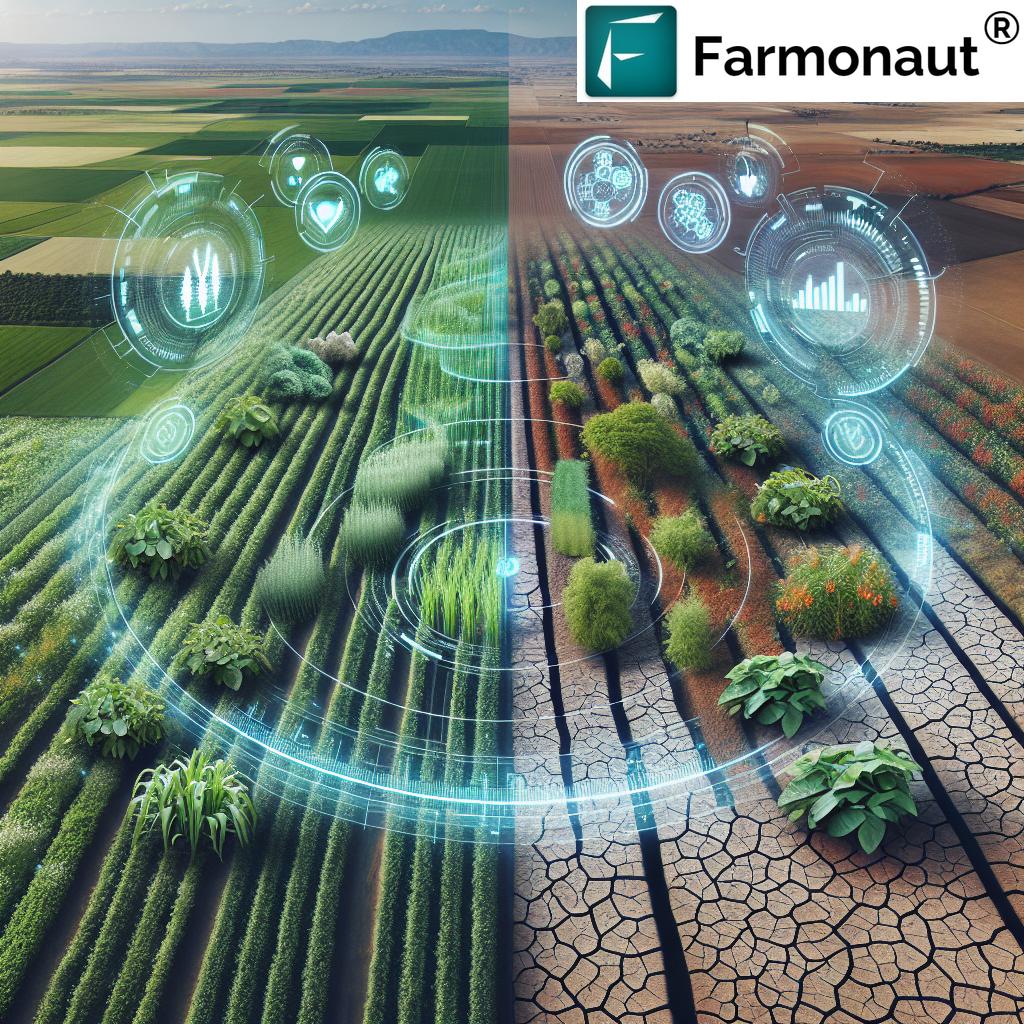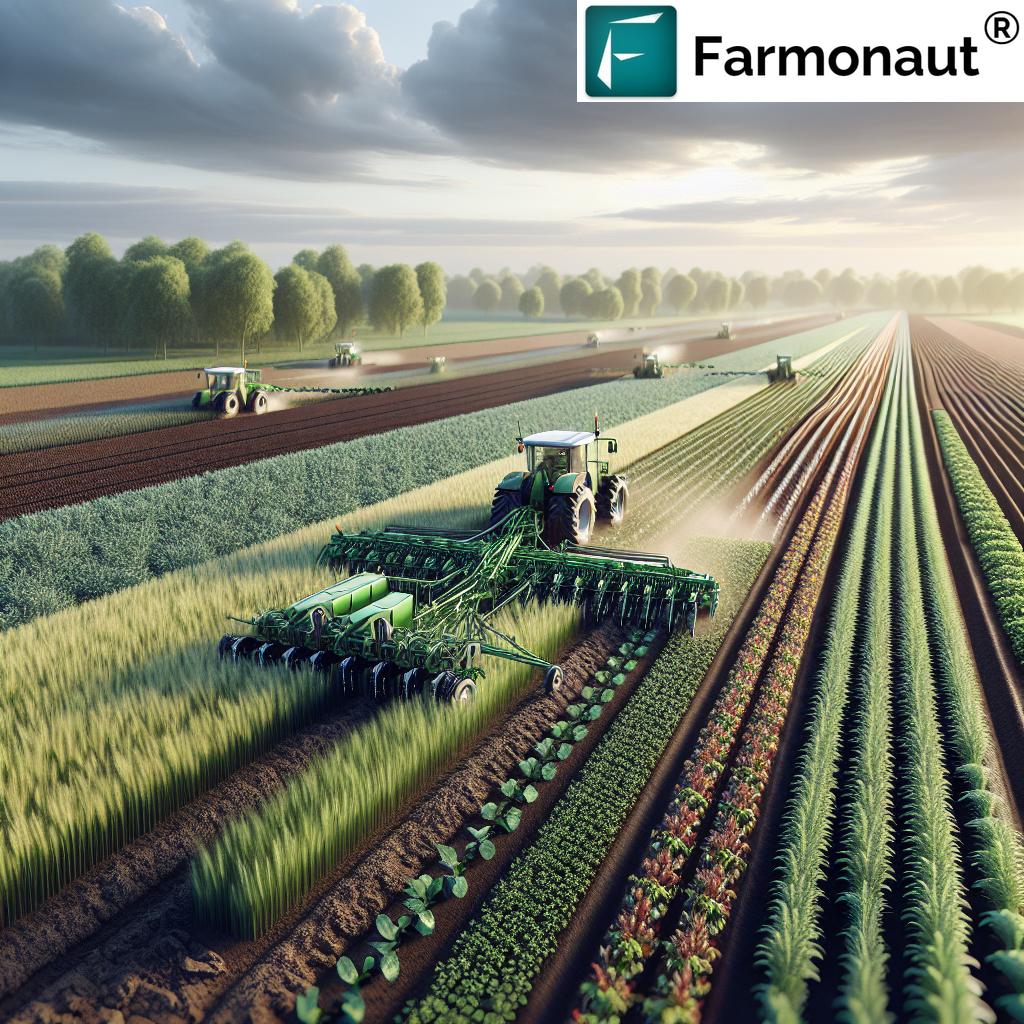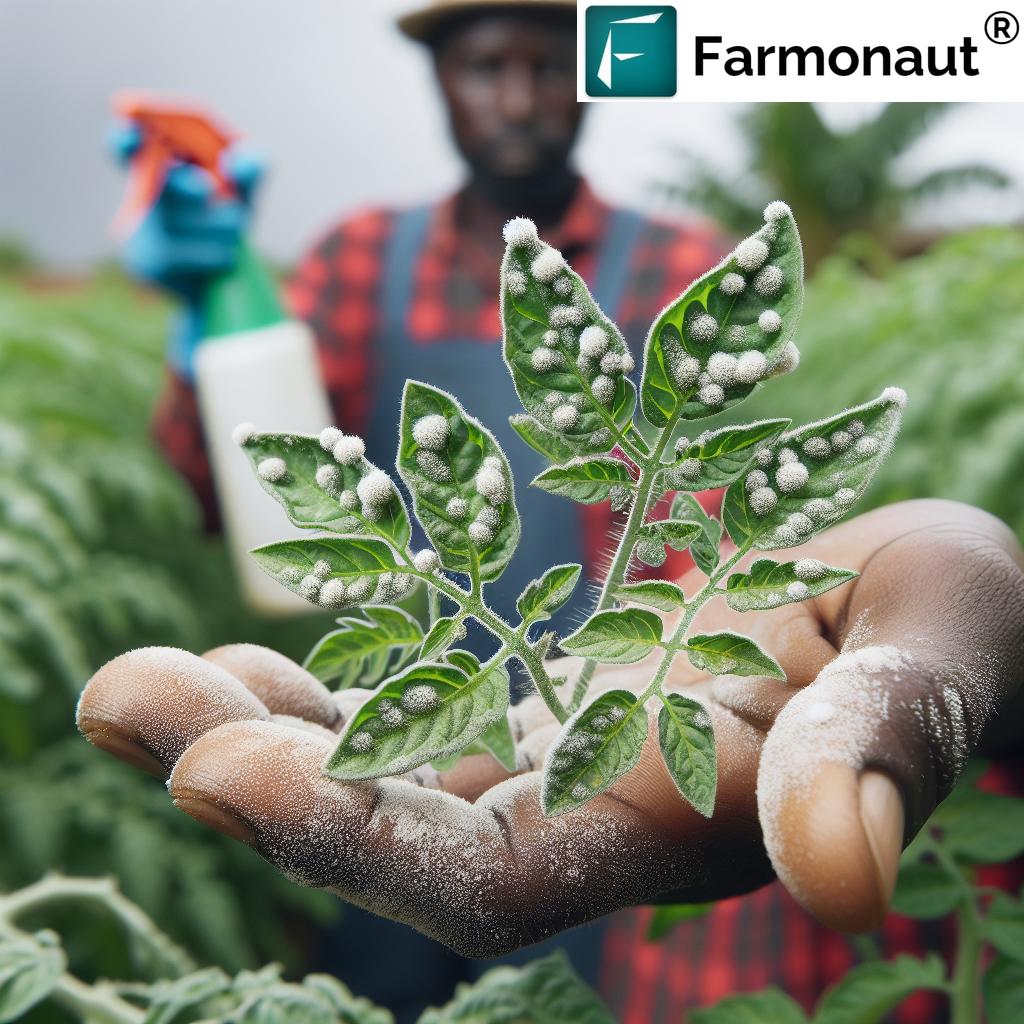Smart Agriculture Solutions: 7 Shocking Farming Hacks
“AI-powered farming can increase crop yields by up to 30% through precise data analysis and resource management.”
Table of Contents
- Introduction: The Age of Smart Agriculture Solutions
- 1. IoT in Farming: Sensors & Real-Time Data to Optimize Every Acre
- 2. Power of AI in Agriculture: Machine Learning Drives Smarter Decisions
- 3. Drones & Satellite Imagery: Aerial Eyes for Precision Crop Monitoring
- 4. Big Data Analytics in Agriculture: Transforming Data into Actionable Insights
- 5. Autonomous Agricultural Robots: Automation Boosts Efficiency & Yield
- 6. Blockchain in Agricultural Supply Chain: Traceability & Transparency
- 7. Climate-Smart Farming Practices: Proven Resilience for Uncertain Times
- Technology Impact Comparison Table
- The Farmonaut Edge: Satellite-Driven Precision for Farmers
- Beyond the Seven: Greenhouses, Nanotechnology & More
- Challenges & Prospects: Facing the Future of Smart Farming
- Frequently Asked Questions
- Conclusion: Drive Your Farm Into the Future
In the fast-evolving world of modern agriculture, one thing is clear—smart agriculture solutions are reshaping the entire landscape of farming. Our farms are becoming smarter, more efficient, and deeply data-driven. No longer are traditional practices enough to guarantee profitability and sustainability. Instead, leveraging advanced technologies like IoT, Artificial Intelligence (AI), drones, big data analytics, and even blockchain is essential for optimizing yields and tackling the toughest challenges in agriculture today.
We, as empowered farmers, agribusiness leaders, and stewards of the land, must harness these powerful tools to monitor environmental factors, collect data seamlessly, make informed decisions, optimize resource use, and improve crop health and productivity.
In this comprehensive guide, we’ll dive into the “7 Shocking Farming Hacks” behind smart agriculture solutions—and reveal how you can unlock the full potential of your farm with cutting-edge technology, all while ensuring sustainability and profitability for generations to come.
Key focus: IoT in farming, data-driven farming, AI in agriculture, drones for crop monitoring, big data analytics in agriculture, blockchain in agricultural supply chain, climate-smart farming practices, autonomous agricultural robots, and more!
1. Smart Agriculture Solutions Start with IoT in Farming:
Sensors & Real-Time Data to Optimize Every Acre
At the heart of all smart agriculture solutions, the Internet of Things (IoT) connects our fields, devices, and systems for seamless, real-time monitoring, data collection, and centralized decision-making. These IoT devices and specialized sensors have become pivotal, enabling us to:
- Continuously monitor soil moisture, temperature, and nutrient levels
- Transmit data instantly to our farm management systems
- Adjust irrigation schedules for optimal water usage
- Manage fertilizer application and monitor crop health effectively
- Detect environmental factors like drought or disease risk early
For instance, deploying smart sensors across our fields allows us to detect when and how much water is needed by individual plants. This not only reduces water waste but also prevents overwatering—a common cause of root disease and poor crop performance.
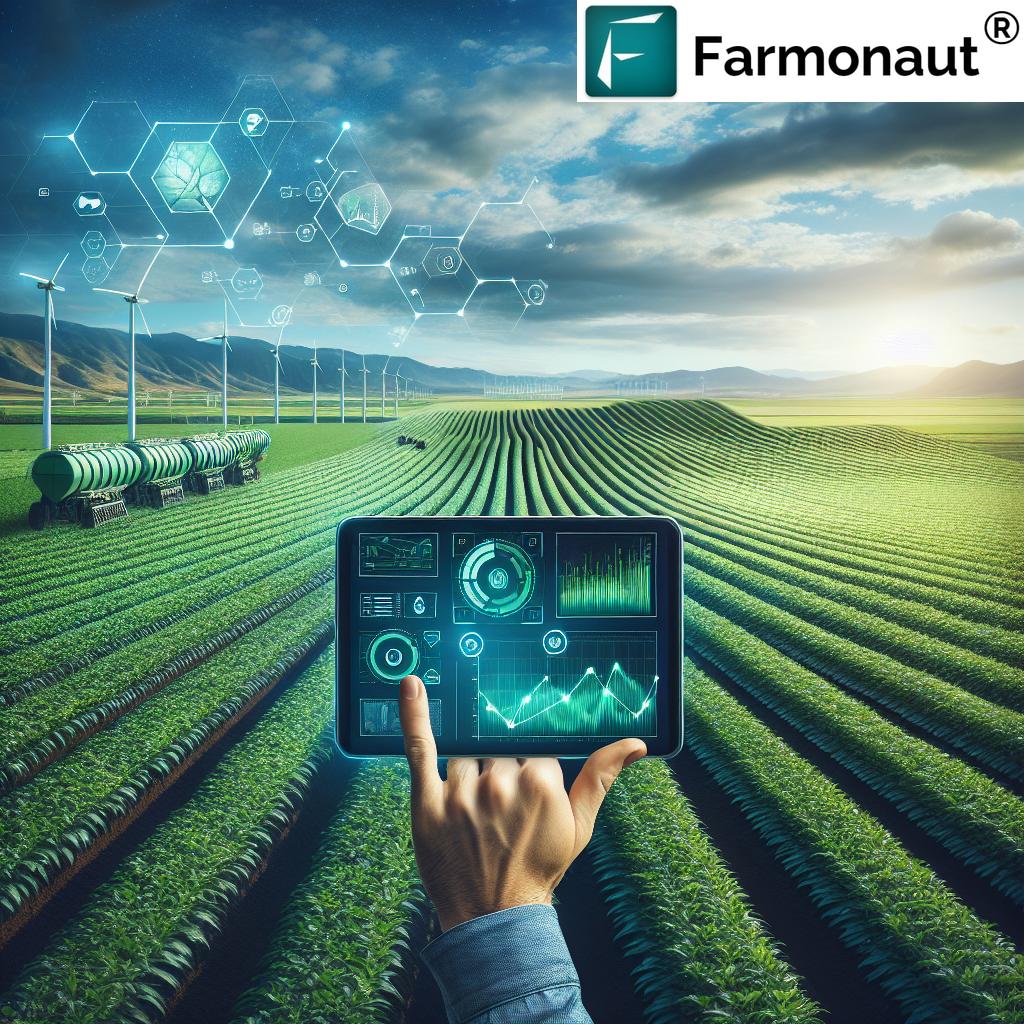
The continuous flow of information provided by IoT in farming means we can make data-driven decisions to optimize yields, reduce input costs, and minimize environmental impact. The Farmonaut API also provides seamless access to high-resolution satellite, field, and weather data to integrate IoT insights into our own agri systems. For developer support, Farmonaut’s comprehensive API documentation makes it easy to accelerate agri-tech innovation.
2. Power of AI in Agriculture: Machine Learning Drives Smarter Decisions
Artificial Intelligence (AI) and machine learning have revolutionized smart agriculture solutions. By analyzing vast amounts of data gathered from IoT sensors, weather data, and satellite imagery, AI algorithms predict outcomes, analyze patterns, and recommend optimal actions for our fields.
- Analyze weather patterns for each growing season
- Forecast pest outbreaks and crop disease risks before they escalate
- Recommend optimal times for planting, fertilizing, and harvesting
- Reduce reliance on chemical pesticides through proactive, targeted interventions
- Increase overall productivity, profitability, and crop resilience
What sets AI in agriculture apart is its ability to integrate multiple data sources and train machine learning models to deliver actionable insights. Platforms like Farmonaut’s Jeevn AI Advisory System leverage AI-based advisory tools to provide:
- Personalized guidance on crop management for every field
- Real-time weather forecasts and climate projections
- Precision recommendations tailored to our specific soil and crop
By integrating AI-driven analysis on our farms, we make better, faster, and more accurate informed decisions to optimize yields and minimize resource wastage. This truly embodies the ethos of data-driven farming.
Jeevn AI and similar advisory technologies represent a leap in agricultural efficiency—where once guesswork prevailed, now we leverage predictive models to stay ahead of risks and protect our investment.
3. Drones & Satellite Imagery: Aerial Eyes for Precision Crop Monitoring
Few smart agriculture technologies deliver as much visible impact as drones and satellite imagery. Unmanned aerial vehicles (UAVs), equipped with advanced cameras and multispectral imaging technology, conduct precision aerial surveys of our farmlands—capturing the smallest variations before they become major issues.
- Monitor crop health at scale and spot trouble early (NDVI, NDRE, EVI indices)
- Detect diseases, pests, and nutrient deficiencies with high accuracy
- Pinpoint areas of the field needing intervention—from irrigation to fertilization
- Track changes over time for data-driven evaluation of farming practices
The advent of satellite-based crop monitoring platforms like Farmonaut has democratized access to high-resolution, multispectral imagery—meaning any farmer, anywhere, can now monitor fields, soil health, and vegetation index values in near-real time, directly from a mobile or web app.
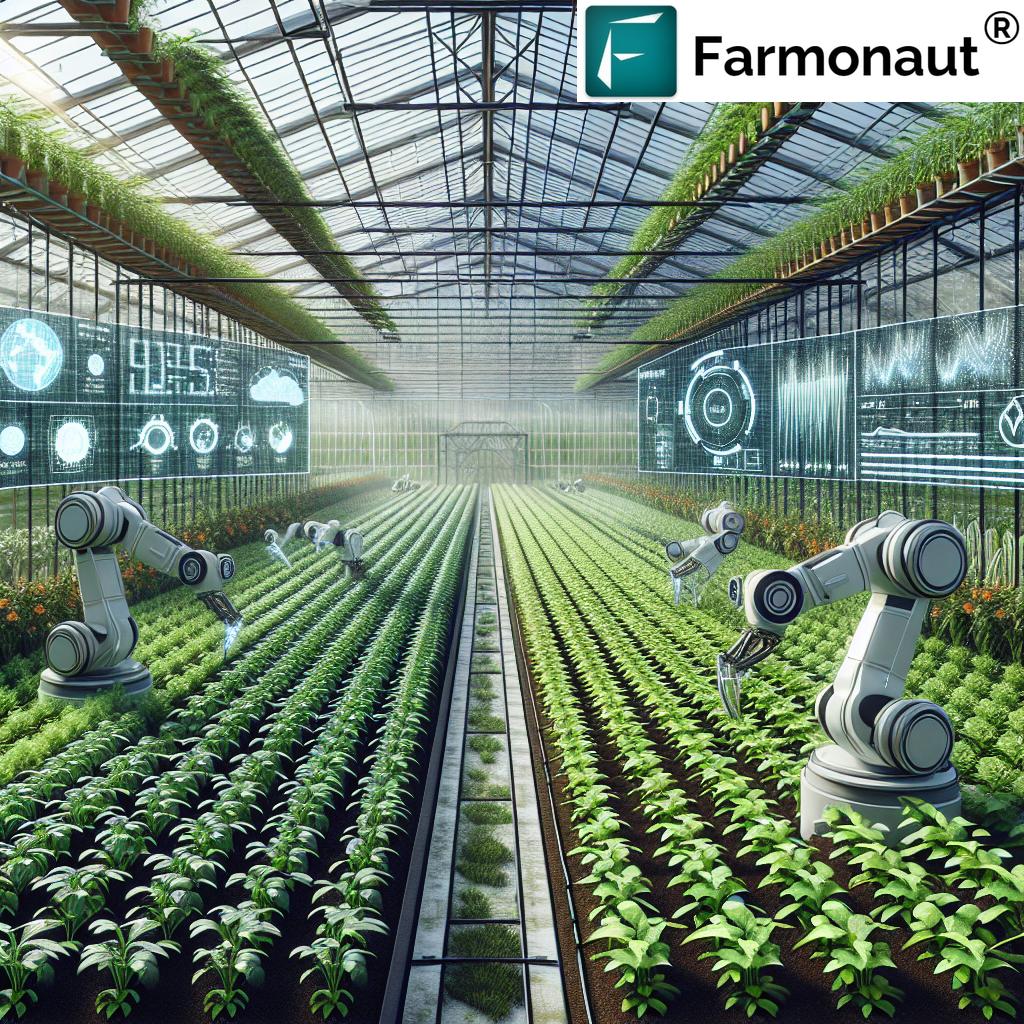
Tools like Farmonaut’s solutions for large-scale farm management empower agribusinesses and cooperatives to monitor plantations, schedule interventions, detect environmental risks, and scale up production—all remotely and affordably.
Drones for crop monitoring and satellite-based monitoring have redefined what it means to be proactive, data-driven, and resilient in modern agriculture.
“Data-driven agriculture reduces water usage by nearly 20% compared to traditional farming methods.”
4. Big Data Analytics in Agriculture: Transforming Data into Actionable Insights
In the age of smart agriculture solutions, big data analytics is the backbone for data-driven farming success. By integrating historical data—including weather conditions, soil analysis, and previous crop performance—we are empowered to:
- Uncover patterns and trends for more accurate crop planning
- Optimize resource allocation (water, fertilizer, and labor) based on predictive models
- Anticipate market demand and align planting schedules with best pricing
- Reduce environmental impact by minimizing overuse of chemicals and water
- Continuously improve productivity and profitability
Platforms like Farmonaut aggregate field-level and satellite data into actionable insights, providing centralized dashboards for easy monitoring. Leveraging these analytics, we can compare growth rates, disease prevalence, and yield outcomes across various fields, seasons, and growing conditions.
With big data analytics in agriculture, our farm management is transformed from reactive to truly strategic—enabling us to consistently improve performance and reduce risks.
5. Autonomous Agricultural Robots: Automation Boosts Efficiency & Yields
Robotics and automation are taking smart agriculture to new heights. Autonomous tractors, planters, weeders, and harvesters now use IoT sensors and GPS to operate with precision—reducing labor costs and minimizing operational risks for farmers worldwide.
- Perform repetitive tasks (planting, weeding, harvesting) 24/7, with high accuracy and minimal downtime
- Reduce labor dependency and associated costs
- Improve efficiency in large-scale farm operations
These autonomous agricultural robots are especially beneficial in areas facing labor shortages or tight planting/harvest windows. By automating key farming practices, we are able to dedicate our human workforce to higher-value tasks—further boosting productivity and profitability.
For plantation management and vehicle/fleet oversight, Farmonaut’s fleet management tools enable agribusinesses to optimize vehicle usage, improve safety, and increase operational efficiency—leading to measurable cost and time savings at scale.
6. Blockchain in Agricultural Supply Chain: Absolute Traceability & Transparency
One of the most stunning farm hacks is the use of blockchain technology in the agricultural supply chain. By recording every stage of production and transportation in an immutable ledger, we enable:
- Total traceability from seed to shelf
- Enhanced food safety and consumer trust
- Verification of organic and sustainable farming practices
- Prevention of fraud and supply chain tampering
Farmonaut’s blockchain-based product traceability solution brings true transparency to the food supply chain—empowering consumers, food brands, and regulators alike to verify product origin and journey.
For companies and cooperatives, this means:
- Compliance with ever-tightening quality requirements
- Improved brand reputation and market differentiation
- Streamlined supply chain audits
Empowering blockchain in agriculture enables us to compete confidently in global markets—where food authenticity and sustainable practices are paramount.
7. Climate-Smart Farming Practices: Proven Resilience for Uncertain Times
As climate unpredictability grows, we must evolve into climate-smart farmers. IoT devices and AI-powered analytics provide:
- Accurate weather forecasting customized for each farm location
- Early-warning systems for drought, flooding, or disease risks
- Data-backed guidance to adapt planting and irrigation practices
- Minimized crop losses and improved food security for communities
By employing carbon footprinting tools (like Farmonaut’s real-time tracker), our farms can monitor and manage environmental impact, driving compliance with sustainability standards while optimizing crop productivity.
Climate-smart practices, enhanced by continuous data monitoring, enable us to bounce back from extreme events and secure a more profitable and sustainable future for all growers.
Technology Impact Comparison Table
| Technology Name | Description | Estimated Yield Increase (%) | Estimated Cost Savings (%) | Environmental Impact | Ease of Implementation |
|---|---|---|---|---|---|
| IoT in Farming | Network of sensors for real-time environmental, soil, and plant monitoring | 10–15 | 10–20 | Reduces water and fertilizer waste | Medium |
| AI in Agriculture | Predictive analytics for crop, weather, and pest management | 15–30 | 15–25 | Minimizes chemical usage, enhances sustainability | Medium |
| Drones & Satellite Imagery | Aerial crop monitoring for health, stress, and disease detection | 10–20 | 10–30 | Quick response to field issues, reduces losses | Medium |
| Big Data Analytics | Integrates datasets to inform planning and operations | 10–15 | 10–20 | Optimizes resource use, minimizes waste | High |
| Autonomous Agricultural Robots | Automated planting, weeding, and harvesting systems | 5–10 | 20–40 | Reduces fuel/labor, minimizes soil compaction | Low-Medium |
| Blockchain in Agricultural Supply Chain | Immutable product record for full traceability and trust | 3–5 | 10–15 | Enables sustainable/organic verification | Medium |
| Climate-Smart Farming Practices | Adaptive techniques based on weather and environmental data | 10–15 | 5–10 | Reduces climate risk, builds resilience | Medium |
The Farmonaut Edge: Satellite-Driven Precision for Farmers
What sets Farmonaut apart in the crowded field of smart agriculture solutions is its ability to make advanced precision agriculture affordable and accessible for all—from smallholder farmers to cooperatives, large agribusinesses, and food companies worldwide.
- Satellite-based, multispectral crop health monitoring: Monitor NDVI, NDRE, soil moisture, and crop performance in real-time for truly informed agri-decisions.
- AI-powered Jeevn Advisory: Real-time advisory using machine learning, satellite data, and weather analysis—directly via web, Android, or iOS app.
- Blockchain supply chain traceability: Ensure verifiable transparency, food safety, and organic sustainability in products.
- Fleet & resource management: Optimize farm machinery, improve efficiency, and future-proof your agribusiness logistics.
- Carbon footprinting and sustainability: Track and reduce environmental impact using dedicated tools.
- Accessible worldwide: All major features available via web, Android, and iOS. API and developer documentation enable easy integration with custom systems.
- Flexible, scalable subscription model: Affordable services without the need for expensive hardware.

Fleet Management for agribusinesses: Reduce operational costs and manage vehicles efficiently with Farmonaut Fleet & Resource Management →
Farmonaut Subscription Plans
Choose from flexible, scalable plans tailored to your farm size and needs:
Beyond the Seven: Smart Greenhouses, Nanotechnology, and More
Smart Greenhouses & Vertical Farms
Our journey with smart agriculture solutions doesn’t end in the open field. Smart greenhouses and vertical farming systems harness climate control, IoT sensors, and automated management to maximize plant growth year-round.
- Automated sensors and actuators control temperature, humidity, CO₂ and light
- Continuous monitoring ensures optimal conditions for plant health and yield
- Reduced resource waste and enables local, sustainable food production
Nanotechnology in Agriculture
Nanotechnology introduces nanosensors—ultra-fine detectors capable of monitoring soil nutrient levels, detecting pathogens, and controlling irrigation at the molecular level. For example:
- Nanosensors using graphene to detect nitrate and phosphate concentrations in soil
- Real-time alerts for nutrient imbalances or soil contaminants
- Precision management for fertilizer and pesticide application
The integration of advanced nano sensors further empowers us with data-driven precision—helping improve efficiency and minimize environmental impact.
Challenges & Prospects: Facing the Future of Smart Agriculture Solutions
While the results of smart agriculture technology are astonishing, widespread adoption still faces several challenges:
- High initial costs for IoT, drones, or robotics (though platforms like Farmonaut dramatically reduce this barrier with satellite-first models)
- Data privacy concerns and the need for robust cybersecurity
- Technical expertise and user training for effective technology use
- Infrastructure gaps in rural regions, especially for Internet of Things deployment
The future of smart farming is incredibly promising. As technology becomes even more accessible and affordable, we can expect to see even greater integration of advanced analytics, automation, and sustainable resource management—driving farming to new levels of efficiency, productivity, and sustainability on a global scale.
With committed efforts toward training, support, and innovative business models like Farmonaut’s satellite-verified crop loan and insurance services, every farmer, including smallholders, can participate and thrive in the era of data-driven precision farming.
Frequently Asked Questions
What are smart agriculture solutions?
Smart agriculture solutions integrate advanced technologies (such as IoT, AI, drones, big data analytics, blockchain) to collect and analyze data, optimize resource use, and enhance the efficiency, productivity, and sustainability of modern farms.
How does IoT help in farming?
IoT in farming provides real-time monitoring of soil, weather, and crop data. This empowers farmers to make timely, precise decisions on irrigation, fertilization, and pest/disease control, increasing yields and reducing input costs.
What is the role of AI and machine learning in agriculture?
AI and machine learning analyze data from multiple sources (sensors, satellites, weather) to predict risks, recommend optimal actions, and automate farm management routines. This increases crop yields, reduces losses, and promotes sustainability.
Can small farms use satellite-based tools like Farmonaut?
Yes! Farmonaut’s platform is designed for accessibility and affordability, making advanced precision agriculture available to smallholder and medium-sized farms through flexible app subscriptions.
Why is blockchain important for the agricultural supply chain?
Blockchain ensures end-to-end traceability and transparency, verifying origin, production, and handling of agricultural goods. This builds trust for consumers and enhances food safety compliance.
What are the main benefits of smart agriculture?
- Optimized resource use (water, fertilizer, labor)
- Higher yields and better crop quality
- Reduced input costs and environmental impact
- Increased resource efficiency and sustainability
- Enhanced supply chain transparency and food safety
How do I get started with Farmonaut’s precision agriculture tools?
Simply download the Farmonaut Android app, iOS app, or access the web portal. You may also explore the API for integration with your farm management systems.
Conclusion: Drive Your Farm Into the Future
The path to successful, sustainable farming lies in embracing smart agriculture solutions. As we’ve uncovered in these seven transformative farming hacks, the integration of IoT, AI, drones, robotics, big data analytics, blockchain, and climate-smart practices is more than a trend—it’s an agricultural revolution.
By leveraging data-driven insights, automation, and real-time monitoring, we can optimize yields, reduce costs, and minimize environmental risks—ensuring prosperity for our farms and communities.
Ready to unlock the potential of your fields? Start with Farmonaut—the platform that makes advanced, affordable precision agriculture a reality for all.





